Measure the highest speed possible in this universe, just using objects you could find in your kitchen.
What you need
| A microwave |
| A plate or shallow bowl |
| Four slices of bread |
| Some butter or margarine |
What to Do
Take the turntable out of the microwave.
Put an upside down plate over the rotating parts.
Spread the butter evenly on all 4 pieces of bread, right out to the edges.
Lay the four slices on another plate or the turntable plate, and add some butter at the joints.
Put this in the microwave, heat until the butter starts to melt (10-15 seconds) it is probably worth checking every 4-5 seconds
What may Happen
You should find that the butter melts in splodgy bands. If you measure the distance between these and multiply it by two you will find the wavelength of the microwaves that the microwave oven is using to cook with.
If you look on the back of your microwave oven you should see a number in GHz (billion vibrations a second) or MHz (million vibrations a second), this is the number of waves the microwave produces every second - the frequecy.
If you multiply the wavelength you found by this frequency you will find the speed of light.
What is going on?
A microwave oven works by producing microwaves - these are a type of electromagnetic wave just like radio waves, infra red or visible light. They are produced by a device called a magnetron and leave from a hole in the right.
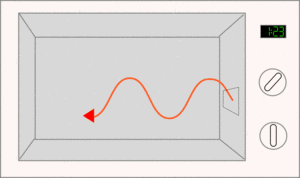
The microwaves will reflect back and forth from the two sides of the metal oven.
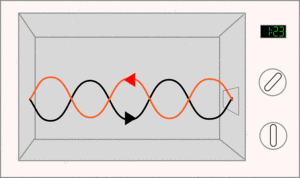
The wavelength of the microwaves is tuned to produce a standing wave. This is where you get two waves, one going in each direction, these interact to make some areas where there is a huge vibration and others where there are none.
This means that there are places where the microwaves are very intense, where the molecules will be vibrated very powerfully so heated strongly. Others where the microwaves are weak. These areas separated by half a wavelength. This is why there is a turntable in a microwave oven, otherwise parts of your food will be overcooked and others will still be raw.
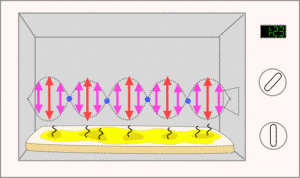
If you put the buttered bread in the microwave the butter will first melt where the microwaves are the most intense, so the distance between these will be half a wavelength.
So what has the wavelength got to do with the speed of light?
Your microwave oven is producing microwaves vibrating at a certain frequency - this is written on the back of your microwave.
The wavelength depends on how rapidly the wave is vibrating (the frequency) and how fast it is moving - as it is a type of light, the speed of light.
| If you have a wave traveling at a fixed frequency (a certain number of vibrations a second). |
| If it is moving more slowly it will travel less far between vibrations so the wavelength will be less |
| If it moves faster then the wavelength will be longer. |
So this means that if the wave has a frequency of 100Hz it will travel it's wavelength 100 times in a second. So a waves speed is frequency × wavelength.
Because microwaves are a type of light you have just measured the speed of light in your kitchen!
Written by Dave Ansell
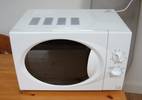

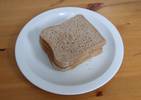
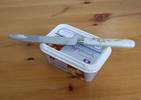







No comments:
Post a Comment